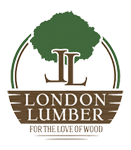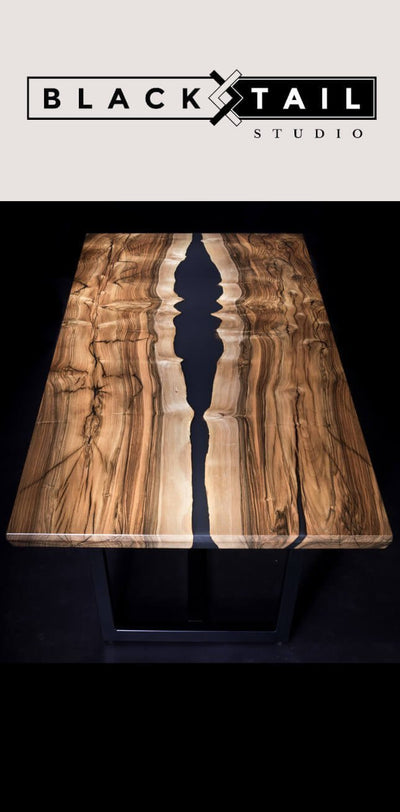Available Species
DOMESTIC HARDWOOD
Ash (White)
Source: Eastern USA, Lake States, New England and Central States Color: Warm brown heartwood with narrow light brown sapwood Pattern: Straight moderately open grain Characteristics: Heavy, hard, strong, stiff and high shock resistance with excellent blending qualities and above average workability.
Uses: Interiors, furniture, handles of tools and implements, sporting and athletic goods
Birch (Yellow)
Source: Canada and the USA (Lake States) Color: Cream or light brown tinged with red, with thin, nearly white sapwood Pattern: Both rotary and sliced, plain and often curly or wavy Characteristics: Heavy, very strong, hard closed-grained, even texture
Uses: Furniture, interiors, interior and exterior doors, store fixtures, accessories
Cherry, American
Source: Maine to Dakotas and Appalachians, Pennsylvania to West Virginia Color: Light reddish-brown Pattern: Straight-grained, satiny, some figured, small gum pockets are normal markings Characteristics: Light, strong, rather hard, fine-grained.
Uses: Fine Furniture, woodworker and engravers blocks
Hard Maple
Source: USA- Appalachians, Northwest USA, Canada Color: Cream to light reddish-brown heartwood, thin white sapwood tinged slightly with reddish-brown. Usually straight-grained. Characteristics: Heavy, hard, strong, close-grained, tough, stiff, uniform texture; excellent resistance to abrasion and indentation.
Uses: Furniture, interiors, fixtures, flooring, woodenware, cutting surfaces, bakery paddles and other industrial uses, school furniture, decorative inlays and overlays
Birds Eye Maple (Hard)
Source: USA (Lake States), Appalachians, Northwest USA, Canada Color: Cream to light reddish-brown heartwood, thin white sapwood tinged slightly with reddish-brown. Highly figured blistered, quilted, Birds Eye scattered over entire tree or in irregular patches .
Uses: Furniture, interiors, fixtures, flooring, woodenware, cutting surfaces, bakery, paddles and other industrial uses, decorative inlays and overlays
Curly Maple (Hard or Soft)
Source: USA (Lake States), Appalachians, Northwest USA, Canada Color: Cream to light reddish-brown heartwood, thin white sapwood tinged slightly with reddish-brown Usually found highly figured with curly fiddleback, scattered over entire tree or in irregular stripes and patches Characteristics: The soft maples are roughly 25 percent softer than the hard maples; heavy, fairly strong, close-grained, stiff, uniform texture; good resistance to abrasion and indentation.
Oak (Red)
Source: USA, Canada Colors slightly redder tinge than While Oak, although difficult for an untrained eye to tell the difference Flake figure less prominent than white oak's. Slightly courser grain, with large, rounded, open pores; a little easier to finish than white oak., though both are excellent Uses: Nearly all common uses of hardwoods, and especially popular where strength and durability are required; not for water-tight or water-resistant purposes, were white oak is the choice
Oak (White)
Source: Eastern USA Light brown with a greyish tinge in the heartwood to shades of ochre in the sapwood. More pronounced and longer rays than red oak, frequently rift-sawn for the comb-grain, pin striped figure than red oak. Pores are angular and very numerous and filled with glistening substrate called tyloses, which makes this wood especially suitable for water-tight containers (barrel staves) and where water resistance is required; tannic acid in the wood protects it from fungi and insects.
Poplar (American Yellow)
Source: Eastern USA Color: White to yellowish cast, sometimes with slight greenish cast, and occasionally with rather dark streaks. Straight grain. Even texture, light to medium weight, excellent strength, machines easily, stable when dried, excellent gluing and resilience to splitting when nailed.
Uses: As veneer for faces, cross-banding, and backs for plywood; as lumber for furniture component parts, turnery, interior trim and millwork, cabinetry, and exterior trim and siding.
Walnut (American Black)
Walnut grows throughout the United States and southern Canada. Light grey-brown to dark purplish-brown. Plain to highly figured; this one species produces a greater variety of figure types than any other, approached only by mahogany; longwood (plain and quarter sliced, half-round, both plain and figured, crotches, swirls, stump wood and occasional burls). Moderately heavy, very strong for its weight, exceptionally stable.
Uses: Furniture, architecturally woodwork, gunstocks, novelties.
Osage Orange
Displaying a bright yellow or golden colour, this hardwood is highly sensivite to UV rays that will cause it to turn a darker shade of brown. When protected properly, it will be mostly used for turned objects, musical instruments and sometimes archery bows
EXOTIC HARDWOOD
Many different species available, if you don't see it, we can get it!!
Jatoba
Color varies from a light orangish brown to a darker reddish brown, sometimes with contrasting darker grayish brown streaks. This wood tends to darken upon exposure to light. It's incredible hardness make it a good wood for projects such as cutting boards, tool handles & turned objects.
Purple Heart
Also known as Amaranth, this colorful Latin American hardwood is tremendously popular for furniture and other designs that call for a unique splash of color. Purpleheart has excellent strength properties, and can be used in applications where strength is important - the most common use for the hobbyist are: inlays/accent pieces & accent in flooring or furniture.
Padauk
Moderately heavy, strong, and stiff, with exceptional stability, it’s a popular hardwood among hobbyist woodworkers because of its unique color and low cost. This type of hardwood is often used for veneer, musical instruments and turned objects.
African Mahogany
With a variable color ranging from a very pale pink to a deeper reddish brown & sometimes with streaks of medium to dark reddish brown, this hardwood is easy to work, glue and finish for any hobbyist. This type of hardwood is often used for turned objects, veneer, furniture and interior trim.
Teak
Easy to work in nearly all regards,it is important to know that Teak contains a high level of silica (up to 1.4%) which has a pronounced blunting effect on cutting edges. It glues and finishes well, and is commonly used by hobbyists to create furniture, turning objects and bowls.
Tulip Wood
Also known as Tulip poplar this hardwood is easy to work in almost all regards with the only downside that it is very soft. Common uses of this wood is for veneers, furniture and small objects.
Zebra Wood
Hardwood featuring a light brown or cream color with dark blackish brown streaks that vaguely resembles a zebra’s stripes. While commonly used by hobbyists to create veneers and furniture, it is often used for skis.
Wenge
Sometimes used as a substitute for ebony because of it's dark color, this species of hardwood is also sought after for paneling, veneers, furniture and musical instruments
Tigerwood
While it's real name is Goncalo Alves, this type of hardwood is widely known as Tiger Wood by flooring professionals. The hobbyists will recognize it for it's hardness that make it great for flooring, furniture and carving but it is also commonly used to create pool cues, archery bows & knife handles.
Bloodwood
Getting it's name from a bright vivid red color, this type of hardwood is also one if the hardest to work with due to it's density. Hobbyists will use this hardness to create carvings, turned objects, furniture, guitars and knife handles.
Rosewood
Easy to work with when turning and cutting, this hard wood contain a lot of natural oils that make it the "go-to" wood for guitars, pianos & other musical instruments.
Olivewood
Sometimes used to create high end furniture, this type of hardwood is most commonly used by hobbyists for turning and small objects.
Cocobolo
This hardwood is well known to display a wide variety of colours that tend to darken with age. Typically used for furniture, accent pieces, musical instruments and small objects.
Yellow Tarara
Also commonly known as canarywood, this light colored wood can be easily worked with hand or machine tools. Typical uses include flooring, furniture and cabinetry.
SOFTWOOD
Cedar
Knots and irregularities found in this type of wood are easily forgotten when it's aroma creates a unique atmosphere. Commonly used for closet lining, outdoor furniture, carvings and small objects. White and Red species available.
SPECIALTY WOOD
A large inventory of live sawn lumber and slabs in a variety of species for you to browse. Sizes are available for many types of projects, including: tables, shelves, mantles, cutting boards and any projects you can think of.
Slabs
Usually rounded or oval in shape, these thick slabs of wood typically feature a live edge that give them a unique look to create one of a kind tables and furniture items.
Live Sawn
Available in different lengths and thickness, these planks can be used to create mantles, shelves, tables, beds and other furniture items.
Russian Plywood
Unlike traditional plywood you may be used to seeing: the layers of inner plies thick solid birch veneer, cross-banded, and laminated with exterior grade adhesive. This results in higher strength and stability while providing a an attractive appearance to cut edges. Available in 60x60 inch sheets of variable thickness.
Bowl Blanks
Available in a variety of exotic and domestic woods, these solid block of woods are perfect to turn and create any shape or size bowl.


